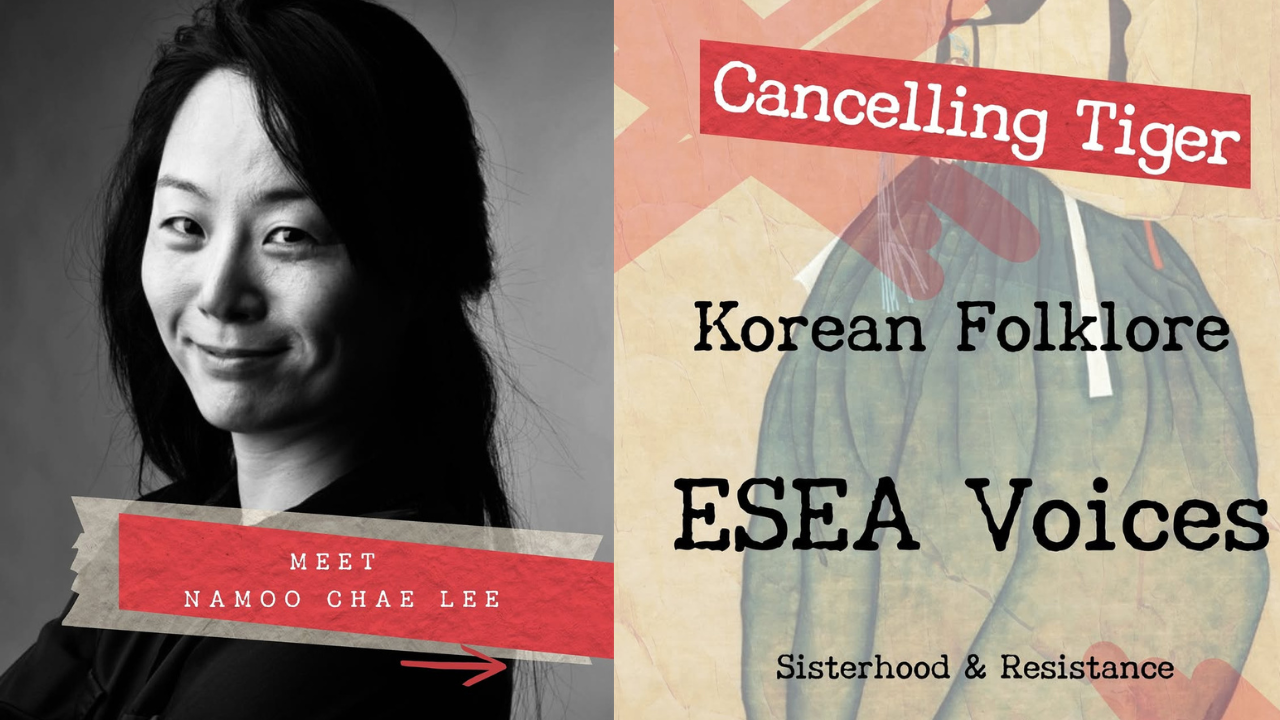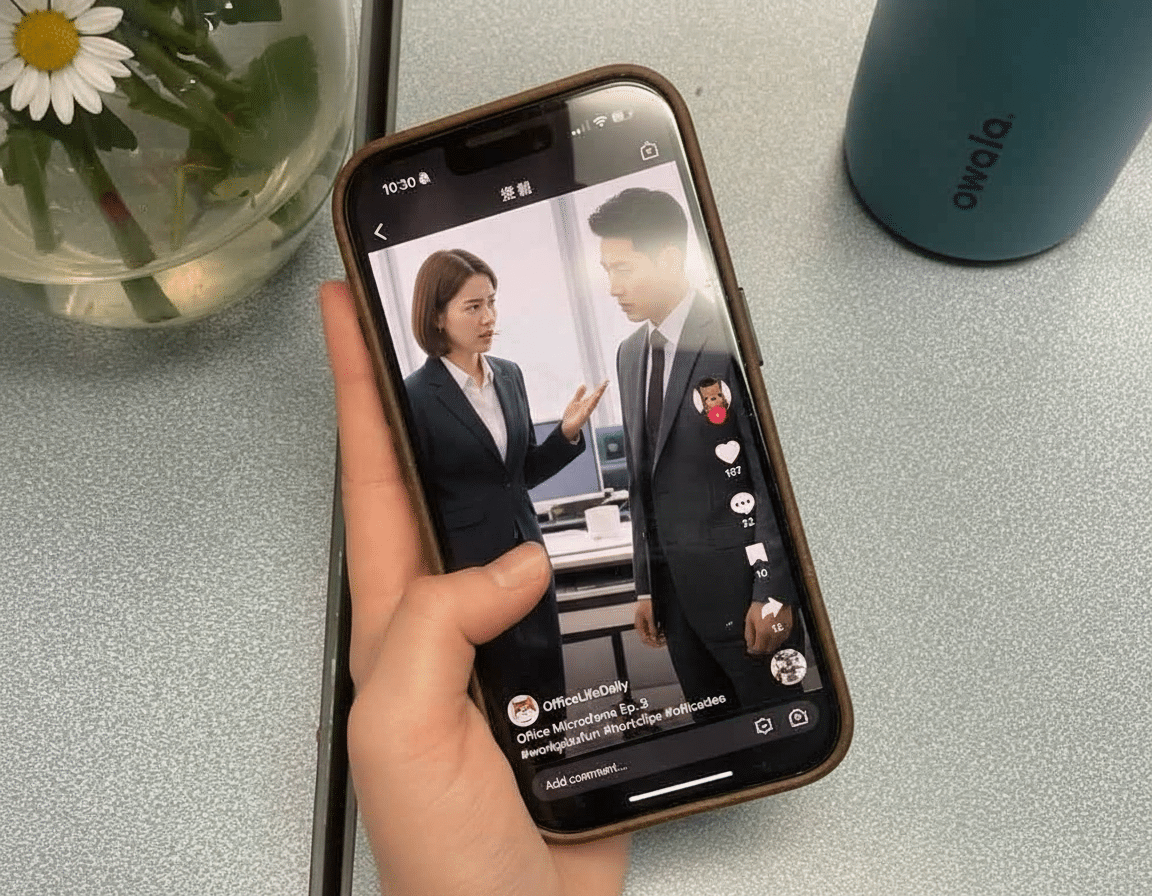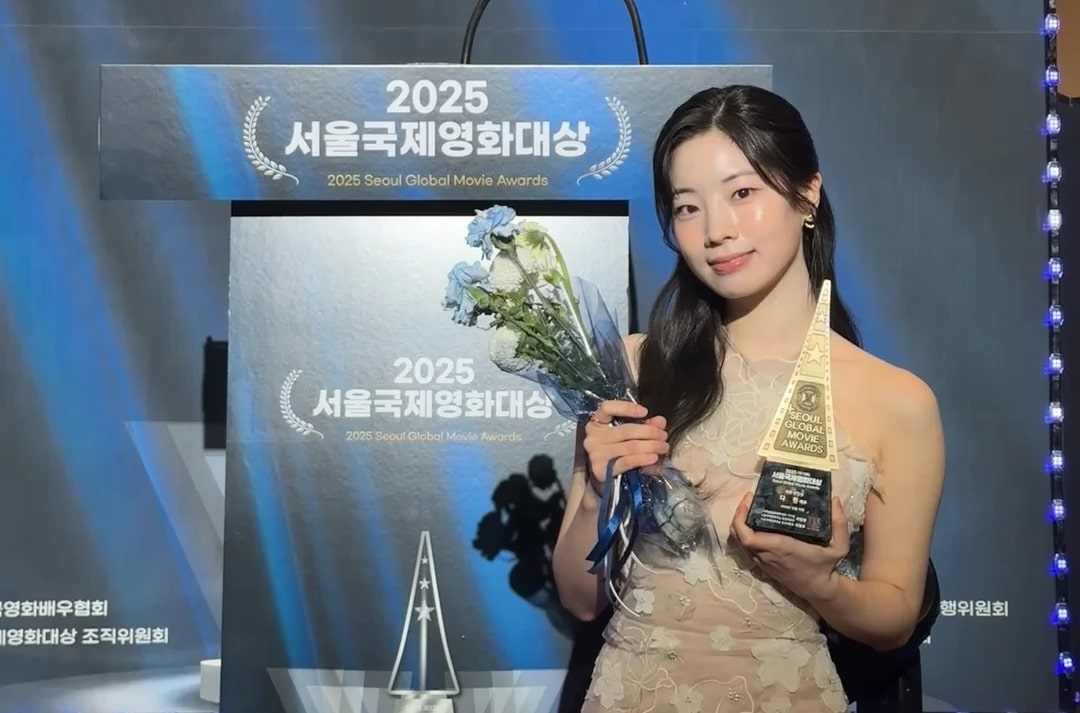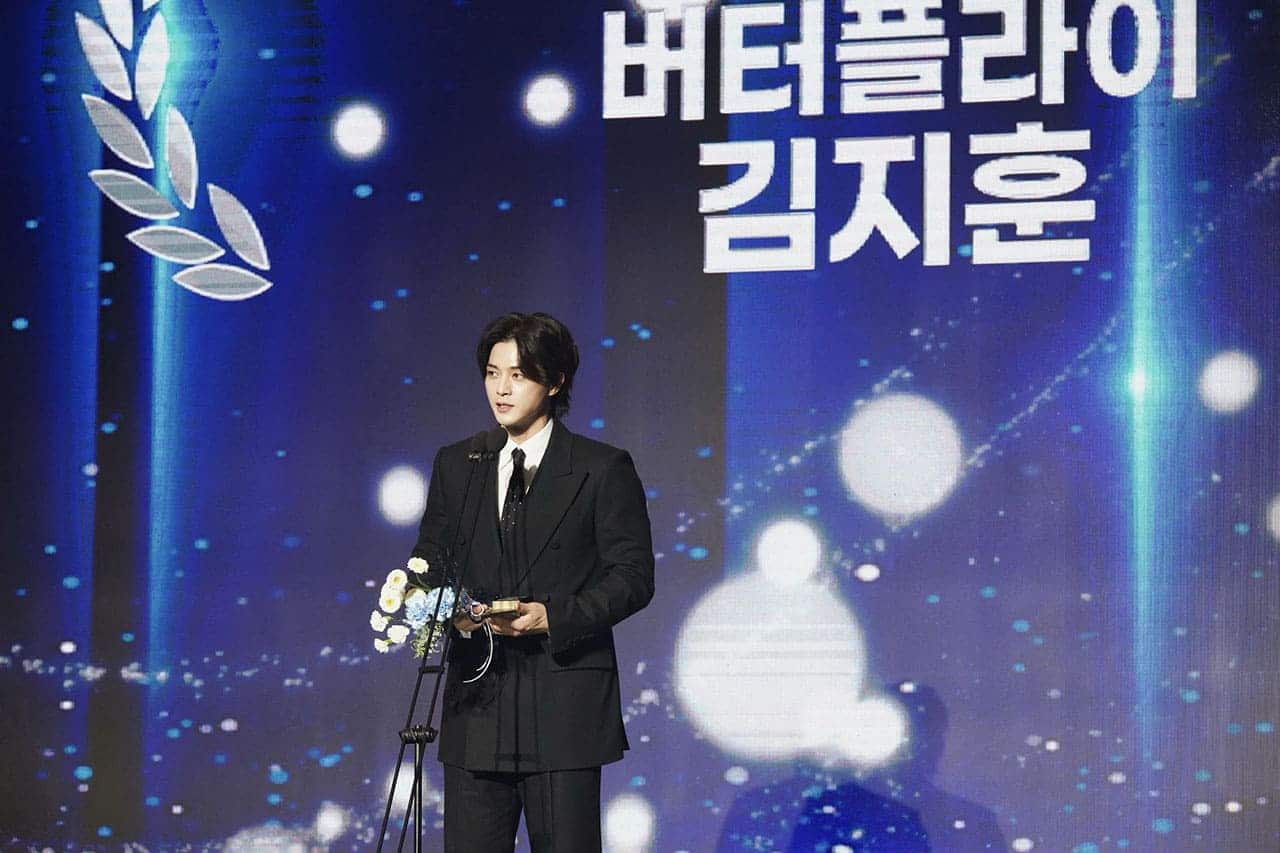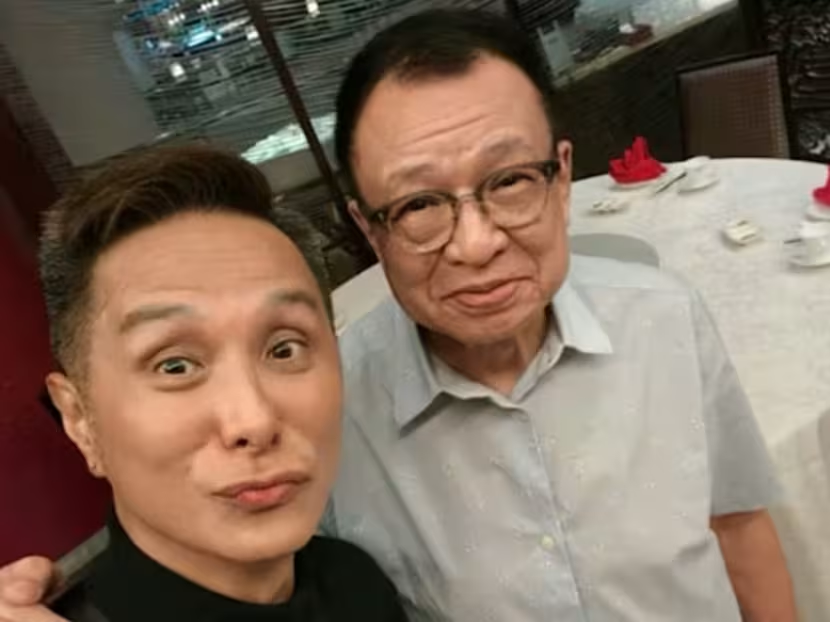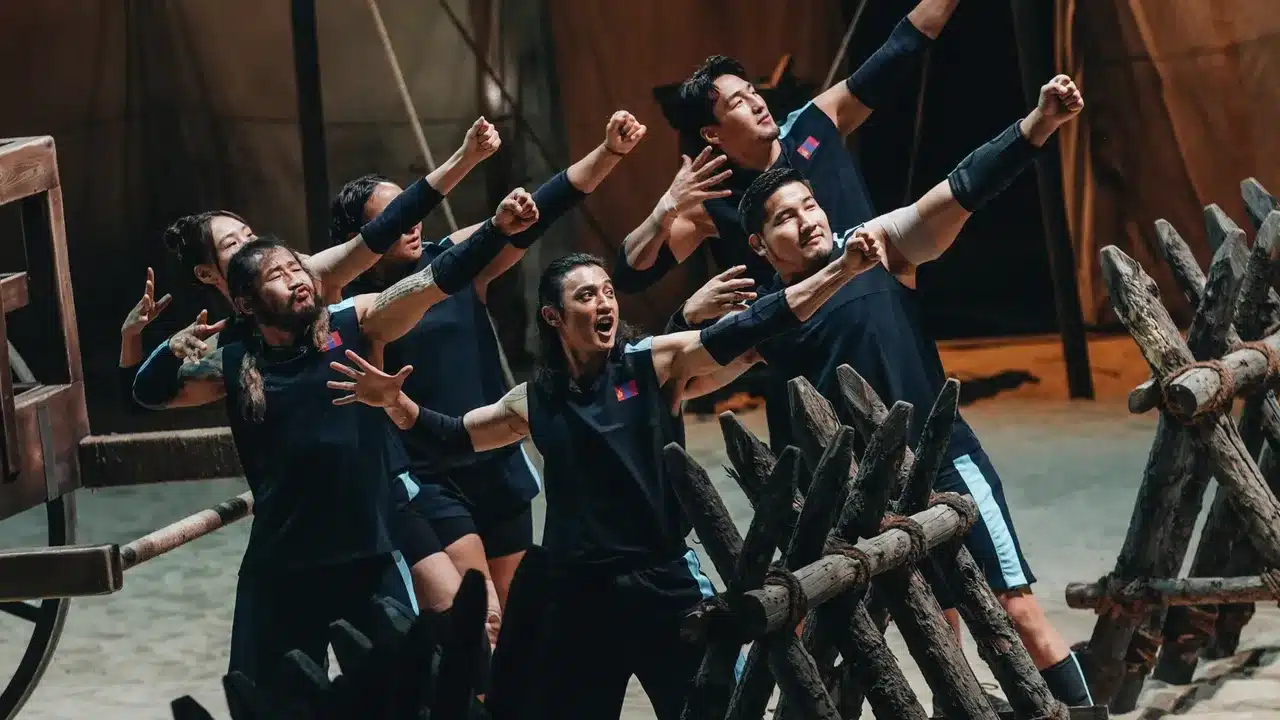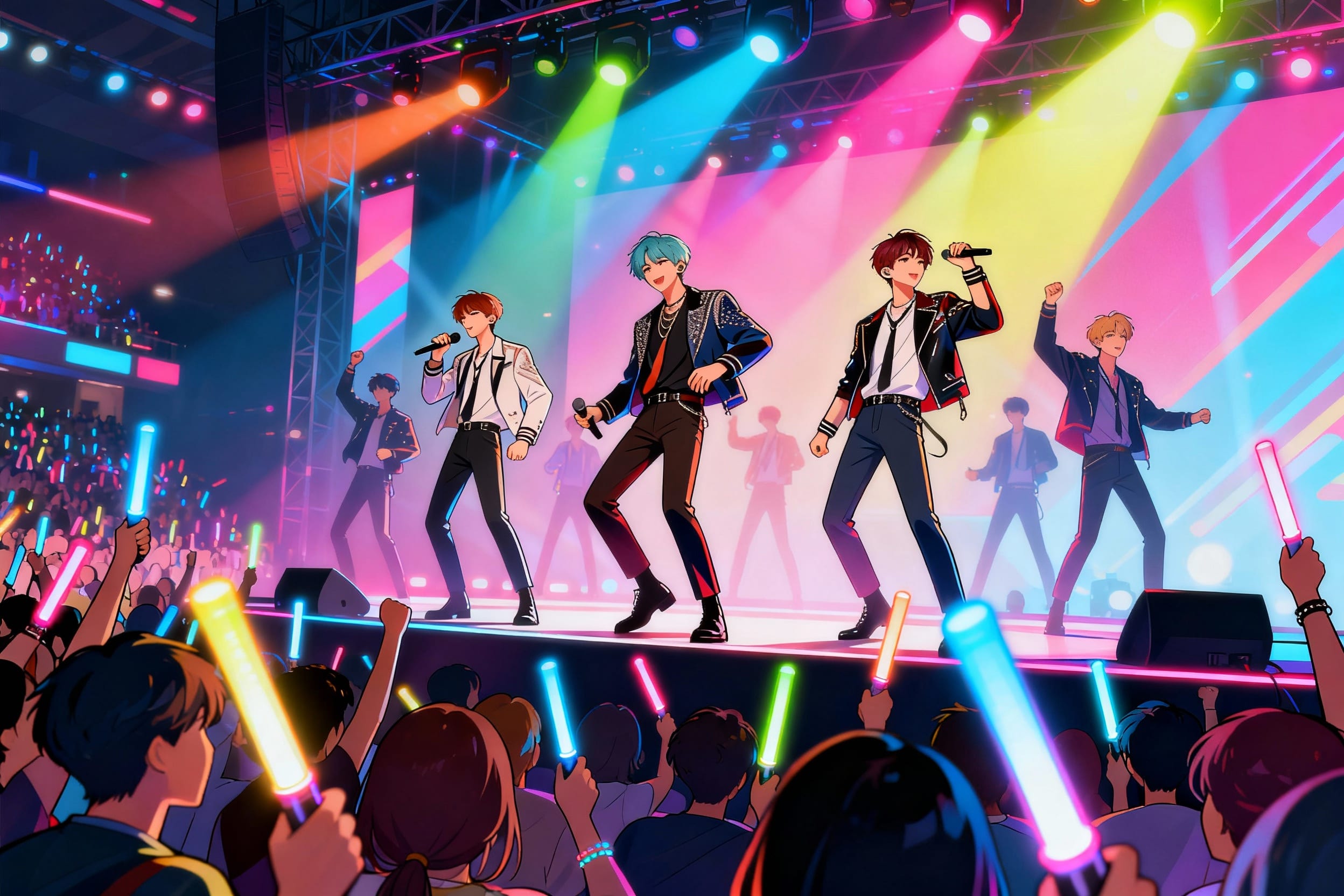Having our voices be heard authentically and unapologetically is something the ESEA world is constantly striving for – and Namoo Chae Lee delivers in spades with her new play, Cancelling Tiger.
The play takes place across 2018-2025 through temporal geographies; two sisters grapple in the aftermath of their father’s scandal, and how this trauma stayed within them, both culturally and personally. Utilising Korean myth and ritual as a framework for discovery and self realisation, Cancelling Tiger explores generational trauma, survival, sisterhood, memory and remembering through reclaiming one’s own voice.
“We are not stains. We are salt. We preserve what’s good. We burn what rots.”
What strikes me most about Cancelling Tiger is the blend of past and present, and the relationship between tradition and contemporary identity. It’s also about what cancel culture means in the context of East Asian diasporas, and for Asian women specifically.
Read more: ESEA UK Culture: MilkTea, Resonate, and Juniper by the Sea Announce GOLDEN Magazine
Intrigued? As you should be. Namoo is breaking bounds in many ways beyond this – as a Korean director, puppeteer, and writer with roots in the UK and US as well as Korea, she has had anything but a linear trajectory in the theatre. More than that, Cancelling Tiger represents a launch pad for the work of Kassna Kollektiv, Namoo’s own play company that seeks to question contemporary political issues through an East Asian female lens.
See Cancelling Tiger as part of Bloomsbury Festival’s New Wave programme, 17th and 18th October [tickets here]
Resonate got to sit down with Namoo to speak about the inspirations behind the play, the personal and the political forces driving its themes, as well as what Kassna Kollektiv has planned. With a keen eye not just for the perspectives of East Asian women, but of the world around her, Namoo dives in to what it really means to be Korean.

We got to speak to Namoo about the inspirations behind the play, what it means to her, and what Kassna Kollectiv has planned. With a keen eye for not just the perspectives of East Asian women but also of the world around her, and what it “really means to be” Korean – you can read our conversation down below:
How has your experience as an East Asian woman in theatre impacted the way you write and create?
Yeah, it’s interesting. It’s been a while because when I was training in New York, maybe because I was a student at the time, I just thought, “Oh, be myself, find my voice.” I didn’t really want to be defined as female or anything else, I just wanted to be me. I was very innocent then.
When I went back to Korea and started working as a director, I struggled quite a lot. The most common comment I got was that I had to treat male and female actors differently because men supposedly have a hard time with a female superior. In Korea, directors are considered the boss, and the relationship is quite hierarchical. For almost ten years, I tried to be a mother figure, to be accepted by the male actors. That was hard, and it wasn’t very creative, but because it was my home country, I did my best to be accepted—only to realise it doesn’t work.
That’s one of the reasons I left Korea again. I went back to the U.S. and restarted from the bottom as an intern puppeteer. I was already in my mid-to-late thirties, but because of my East Asian identity, people assumed I was naive, or a beginner. My willingness to start again was seen as naïveté, rather than determination.
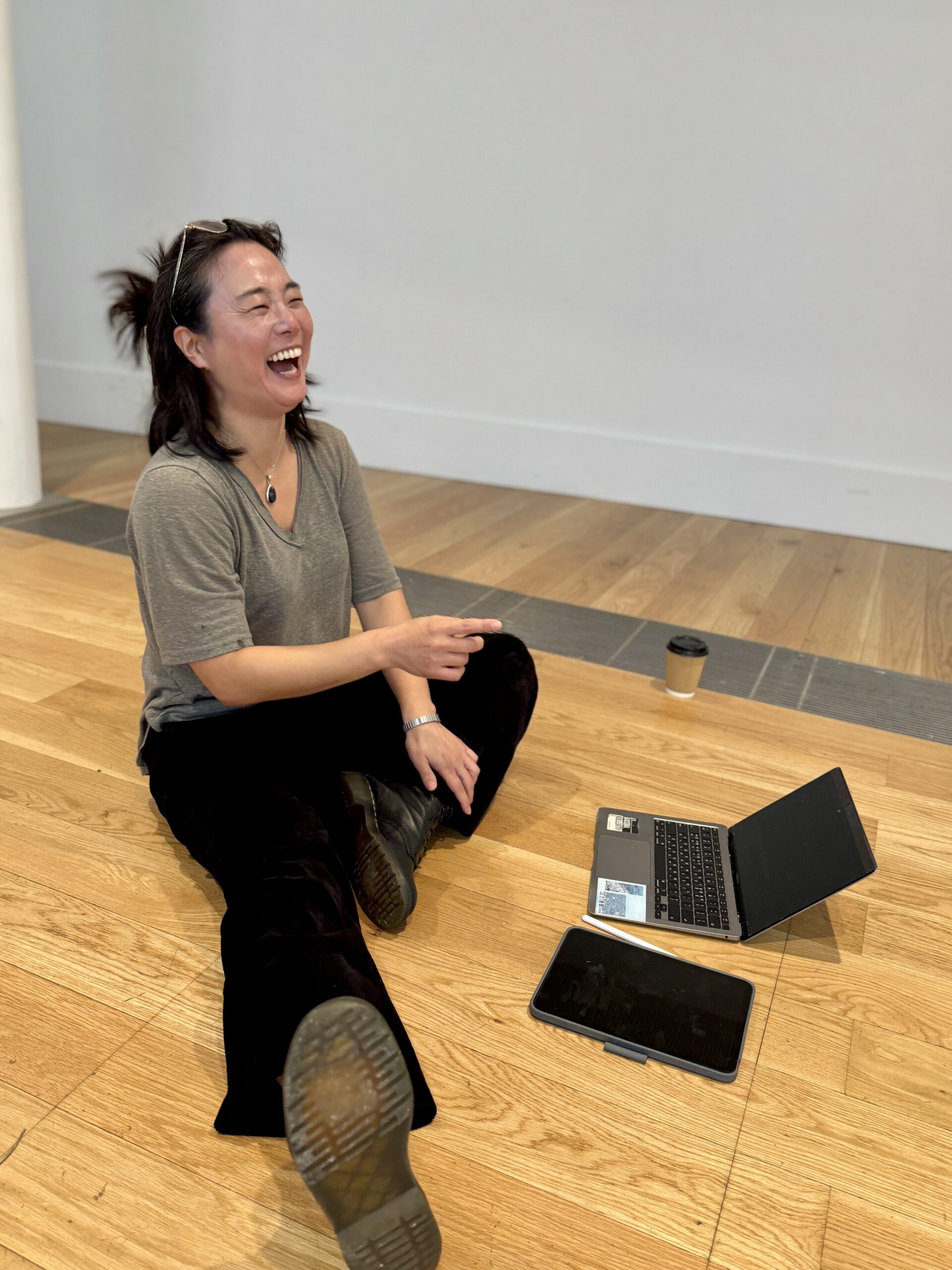
Photographer : Tuyet Van Huynh
Yeah, I mean, that’s quite blatantly a race thing.
Exactly. But at the time, I didn’t really care. I just thought, okay, whatever. That’s actually when I decided to come to the UK, because I wanted to resume my career as a director. My journey from Korea to the U.S. and then the UK has been really interesting.
In my undergrad in Korea, I studied social science, and we learned about something called world-systems theory. It divides the world into three layers: first world, second world, and third world—based on colonialism. According to that, European countries are the first world, because they sit at the top of the hierarchy. The U.S., even though it’s a powerful country, is seen as second world because it imitates other cultures. Then countries like Korea and much of the rest of the world are considered third world.
That’s what I learned back then, and it only really clicked when I arrived in the UK. I finally understood what that meant. People born and raised here often don’t understand it, because they don’t have to. I used to think they just didn’t know yet, that they’d get it when they were older—but no, they simply don’t have to go through that. They’re born with a kind of assumed respect, while I’ve always had to earn it from the bottom up. I’m constantly challenged, gently or harshly, to prove that I deserve to be heard.
Yeah, I completely relate to that. For me I feel like I’ve only become more aware of those dynamics as I’ve gotten older – I feel like I’m constantly fighting to be taken seriously.
Exactly. When I first came here, I worked as a bartender while studying. All the bartenders were either British teenagers—like 19 or 20—or people of colour from other countries doing their master’s degrees. That’s another form of colonialism, shaped by capitalism.
That’s when I really started thinking about cultural colonialism and how it affects my identity. In Korea, we think of ourselves as the majority—we even think we’re “white,” in a way. It was only when I moved to the U.S. or the UK that I realised, no, people here see me as different.
Okay, so tell me, your theatre company Kassna Kollektiv. Why did you start it and what does Kassna mean?
Yeah, so after I finished my studies, I thought I’d immediately get a job in my dream role, but that didn’t happen. I realised there wasn’t really a space for me in this industry, so I decided I’d have to carve out my own path. And I realised that’s what many migrant artists end up doing.
So I founded this collective. Rather than a company, I call it a collective. We chose to spell Collective with a “K” instead of a “C.” It’s symbolic, like a democratic triangle. The “K” also has meaning in Korean. There are three of us, all from Busan in the south of Korea. In the Busan dialect, Kassna means “the girl who wears a man’s hat.”
It’s considered a bit of a derogatory term now, but originally kass is a traditional Korean hat, and na means girl. So Kassna literally means “the girl who wears a man’s hat.” It used to describe a tomboy, but over time it became a slightly insulting term for women who were seen as too bold or capable. We wanted to reclaim it, the idea of women wearing men’s hats because we can. The collective is made up of three first-generation Korean artists from the same city, all trying to redefine that meaning.
That’s fascinating. Was there a particular moment that pushed you to do it, or something that inspired you?
Yes. When I was job-hunting, I had quite a few interviews and I kept getting the same feedback that really puzzled me. People kept saying, “Show us something that’s yours.” And I’d ask, “What do you mean by that?” In one interview, I pushed further, and they said, “Something Korean.” I was like, “What do you mean, something Korean? Am I not Korean enough?” That was the moment I realised there were expectations about what kind of stories I was supposed to tell.
That’s when I decided to start my own company. Otherwise, I’d just end up moulding myself to fit into that white gaze, answering their idea of what a “Korean story” should look like. People would ask me things like, “What kind of plays did you make back in Korea?” and I’d say, “I used to make a lot of Brecht or Shakespeare,” and they’d go, “No, no, no, something Korean.” And I’d think, what do you mean?
The fact that you’re Korean means everything you create is already through that lens.
Right, that’s what I thought too. So the first show Kassna Kollektiv made was called Standing in Between. It’s a devised piece with only one repeated line: “Show me something Korean.” The performer keeps trying to respond through movement for almost an hour, and by the end, it becomes a jumble of modern dance.
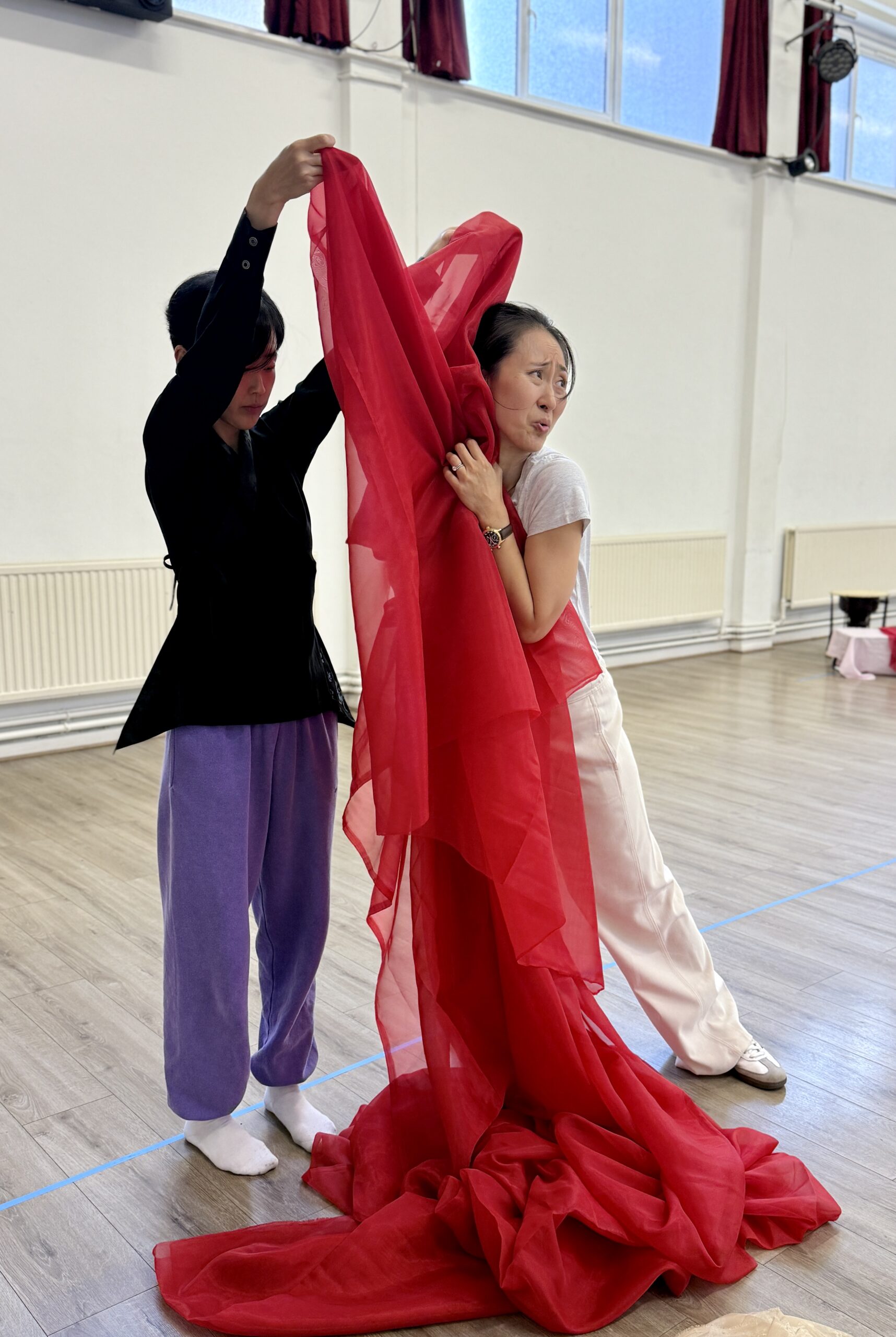
That’s amazing. I’d love to hear more about how you formed the collective and built your team. But I’m also really intrigued by your interdisciplinary approach to your practice.
I actually think “interdisciplinary” is quite a British term. All theatre is interdisciplinary, it’s always been a mix of text and form, and there’s been a long debate about which is more important.
I studied journalism for my undergrad, and even though I don’t actively pursue social science anymore, it still shapes how I see the world. There’s a theory by Marshall McLuhan, the scholar who said, “The medium is the message.” That idea has always guided my artistry. People often think only the message matters and that the medium just serves it. But the medium itself is the message.
In the 1960s and ’70s, during the New Wave theatre movement, there were many formal experiments. I’m not interested in form for form’s sake, but I like to create stories that use different forms together, like soundscapes, vibration, smell, or puppetry. I call it “desperate theatre.” If life is easy and you just want to tell your story, you can do that. But if you really want to be heard, you’ll do anything, you’ll shake them, whisper, dance around them, whatever it takes. So “interdisciplinary” just happens to be the word that fits, but for me, it’s really about the desperation to be heard.
Read more: Halloween at the Barbican: KISS WITNESS’s Prayers for a Hungry Ghost
As a puppeteer, I find it especially powerful. With puppetry, you can play with scale. One human can appear giant next to a tiny puppet, or small beside a massive one. It makes you realise both how small and how powerful you can be. That’s a story words alone can’t tell.
If you could come up with another term besides “interdisciplinary” to describe your practice, then, what would it be?
I’d call it “desperate theatre,” but what I’m trying to achieve is perhaps “total theatre.” It encompasses everything, installation, movement, singing, dancing. It’s all connected.
I love that. On a similar vein, Cancelling Tiger also bridges music and costume design as key components in telling the story and creating that visceral experience. What was it like to bring those elements together in this piece?
Well, we were desperate, haha! But also poor, so we couldn’t make anything grand in scale. But we focused on creating progression through visuals. The concept for the set and costume design is an onion, you keep peeling back layers, revealing secrets bit by bit.
In terms of movement, the play moves backward toward its origin. Once the characters perform the new ritual, they can move forward again. So while the story visually progresses, the physical movement actually rewinds. The new ritual also introduces digital elements and soundscapes. We wanted each scene to stimulate a different sense, there are realistic scenes, flashbacks, ritual scenes, all using different tools to tell the story.
That’s amazing. I’ve read the script, but I’m trying to picture how it all unfolds in real time. And I love the use of mythology too, it’s such a timeless framework that always feels relevant.
Yes, I use mythology because I find it both powerful and a bit pathetic in a way. These thousand-year-old myths and structures still shape our society. Did we learn nothing? You see it even now, so many versions of Cinderella stories on TV.
The myth I used in this play is Korea’s foundation mythology. It’s essentially about how women should behave, how they must be better, softer. Even after 2,000 years, women who act like tigers are still criticised because they’re tigers. I find it both funny and sad that it still resonates today.
Yes, that really ties back to what we discussed earlier, how women are always expected to uphold culture, even when that culture doesn’t always serve us anymore. It’s about deciding what to carry forward and what to change. This play explores that beautifully, the themes of generational shame, memory, and invisibility. These feel deeply connected, especially for East Asian women in the diaspora. In the story, the women struggle to detach themselves from their father’s reputation. Could you talk a bit about why those themes felt important to explore?
I’ve lived through that myself. And after moving to the UK, I realised it’s not just me, many East Asian female artists go through the same thing. I’m not saying everyone, but some are misunderstood because they’re polite in their own way. Western people sometimes perceive that politeness as shyness or incompetence, and it breaks my heart.
I also think the rise of K-culture kind of fuelled the growth of cancel culture in Korea. It happens quite often—once someone becomes really famous, someone might bring up something from decades ago, and they can be immediately removed from society. I’m not saying the actions are forgivable, but the punishment process doesn’t go through the legal system—it’s immediate and social. It feels almost like a public execution. I think that’s partly a side effect of Korea’s fast development. Because we were so busy absorbing values from the “new world,” there wasn’t much room for debate or nuance. Everything became about right or wrong, so when something’s wrong, people just cancel it. That’s how fast growth happens, but it comes at a cost..
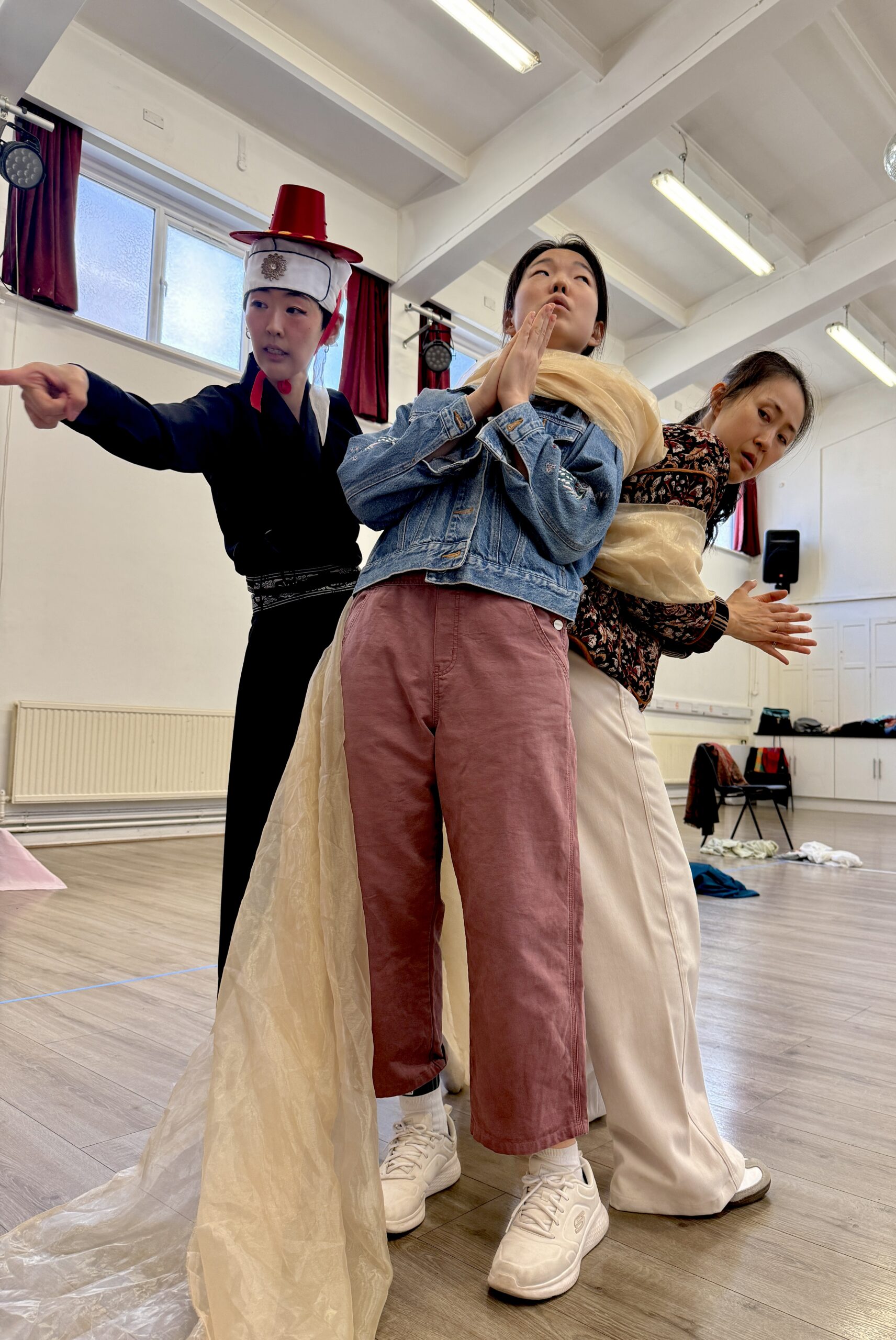
I think social media also allows us to observe and consume different cultures around the world, but it also lacks the nuance and context we need to understand it fully.
Yeah, even culture or justice itself feels like it’s becoming a consumable product. But life isn’t a task—it’s about being human. That’s what I wanted to express.
Do you think there are any links between cancel culture and Asian feminism?
I think so. When punishments happen, it often feels like they’re guided by populism rather than justice. It becomes about who’s liked and who isn’t. I think people are beginning to question that now, but it’s only a recent shift.
I was also thinking about the 4B movement in Korea, where women are swearing off men completely. There was a lot of Western critique of that movement, but I think movements like that need to be understood within their own societies rather than judged by external perspectives.
Exactly. The movement spread from the #MeToo wave began in the US, and when it reached Korea, it became more political. The way people chose who to punish often felt tied to power and money, which complicated its original aim of justice. That was part of what inspired me to write this play. It’s not just a commentary on justice, but on the people within it—the ones who are imperfect, not monsters, just human.
That’s really interesting. The play also demonstrates “survival as a ritual of resistance.” Can you elaborate on that?
I think it connects to what you said earlier about why theatre matters. I was born in a theatre commune in Korea, and theatre has always been a special space for me. I never saw it as an extension of reality, but as an extraction from it—a space where we can transform the world or give voice to the invisible. Creating a performance feels like creating a ritual.
Over time, I realised that our real lives are also full of rituals, especially when we rebuild after something has been broken. I wanted to celebrate that process of re-establishment as a ritual of survival. In this play, the first ritual is about washing off the past, and the second is about celebrating what’s to come. I want this show to be a celebration of the unknown, of what’s next.
I love that. I think we haven’t talked enough about the two rituals and the shamanistic aspects of the play. You mentioned you felt the play was complete when you finished writing the second ritual. We touched a bit on mythology, but can you explain more about how you brought those themes together?
Yeah, I thought of the first ritual as a real Korean traditional ritual, because traditionally they’re about washing away the past or cleansing guilt so you can be fully renewed. But when I was writing that scene, I realised that many traditional shamanistic rituals are actually quite patriarchal too. That made me reflect on how I could move beyond that, rather than reproducing something I didn’t fully agree with.
So I decided I needed to create a new kind of ritual. For me, a ritual celebrates what we already do every day. Take the full moon festival, for example—it’s about celebrating the harvest, something that happens every year. New Year’s is the same day every year, but we celebrate it to make it special. Without that recognition, it’s just another day.
I realised that survival works in the same way. We survive every day, but if we celebrate it as a ritual, it transforms into something meaningful. That’s how I came up with the idea of a new ritual—one that’s blank, open, and welcoming of whatever comes next for these sisters.
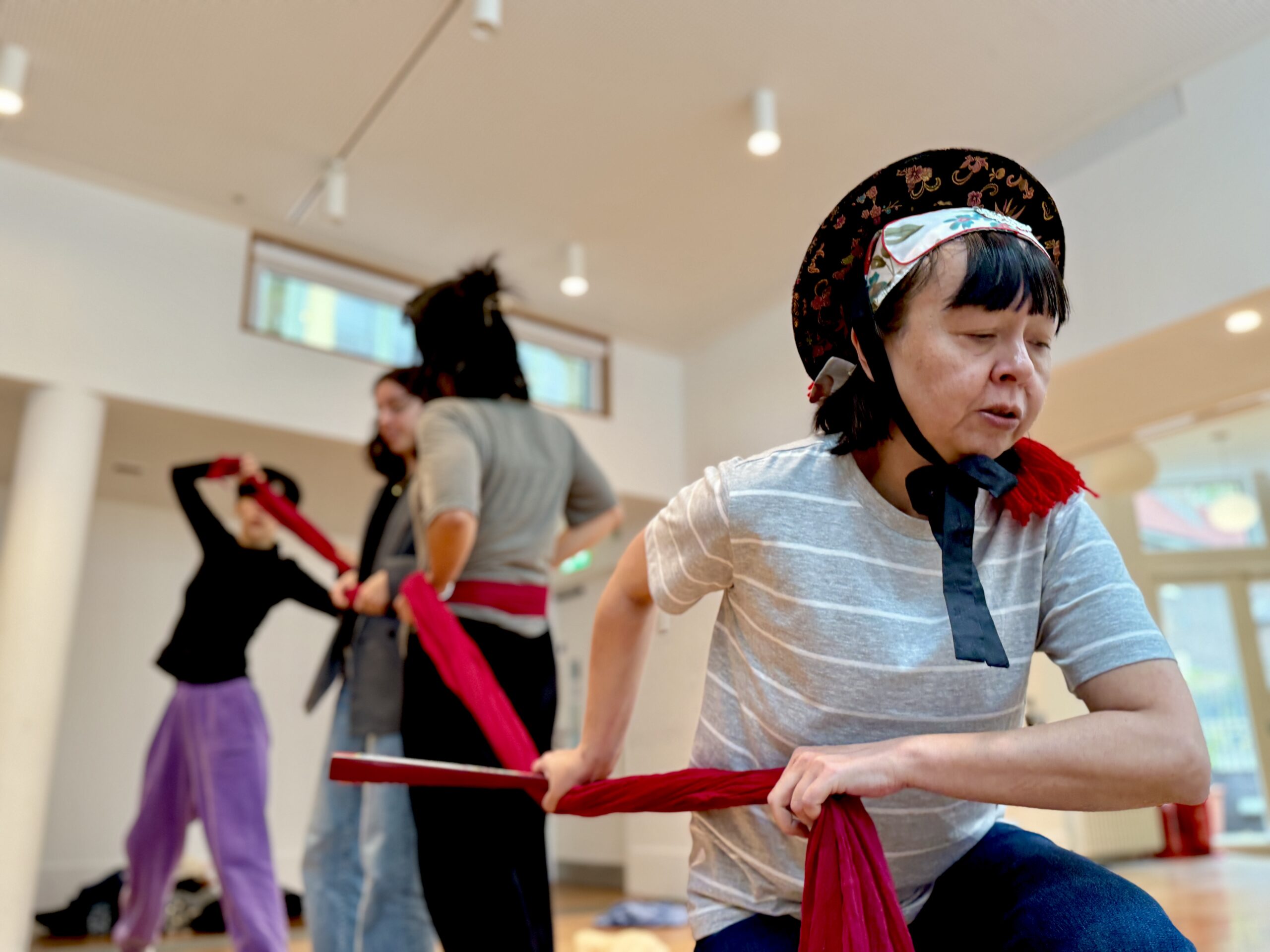
I love that. I think it’s really interesting because it ties back to what we talked about earlier—how you can take parts of a culture or tradition that still serve you, and let go of the ones that don’t. It’s beautiful to keep certain things alive, but it can also be hard to find new ways of doing things when the old ones feel tainted.
Exactly. I’m not trying to create something specifically “Korean” or culturally symbolic in the new ritual. I just want it to belong to them—to the characters themselves.
Right, and even then, it’s still inherently shaped by your cultural lens. That’s part of what makes it beautiful.
Yeah, exactly.
One of the things I also wanted to ask about was the relationship between the two sisters. It really stood out to me.
When I wrote the first draft, I shared it with a male mentor, a very established playwright. He advised me to add sister rivalry—to create drama through jealousy. And I thought, why? He said, “Because jealousy creates conflict.” But I didn’t want to write a story about sisters competing.
Read more: Dam Van Huynh’s Exquisite Noise to Premiere at The Place, London
There’s this constant assumption that female stories need conflict rooted in jealousy, but that’s not what I wanted. These sisters support each other. Maybe that makes it less conventionally dramatic, but it’s more truthful to how women often relate to each other.
I completely agree. I don’t think women are inherently jealous—it’s just a stereotype that keeps being recycled. So what does Cancelling Tiger symbolise for you—both in terms of your career and for the Kassna Kollektiv as a whole?
For me, it represents rebirth. It’s my first major step in the UK, my first fully public show. So personally, it’s a kind of reintroduction—a new beginning.
For Kassna Kollektiv, it’s our launchpad. It feels like the perfect story to start with because it reflects who we are. We’ve survived waves of change—strict cancellations, political shifts, cultural transitions—and yet we’re still here. That survival is part of our story.
That’s beautiful. And finally, what do you hope audiences take away from Cancelling Tiger?
I want them to question their boxes. I think a lot of people see the world through fixed labels or categories, and when something doesn’t fit, they get confused. I want the audience to ask themselves, “Is that box really a box?”
Whether it’s feminism, justice, or identity—I’m not rejecting those ideas, but I don’t want people to be trapped by them. I’d call myself a feminist, but I believe it’s the content that matters, not the label. I hope the play encourages people to look beyond the shells they live in and see what’s inside.
View this post on Instagram

